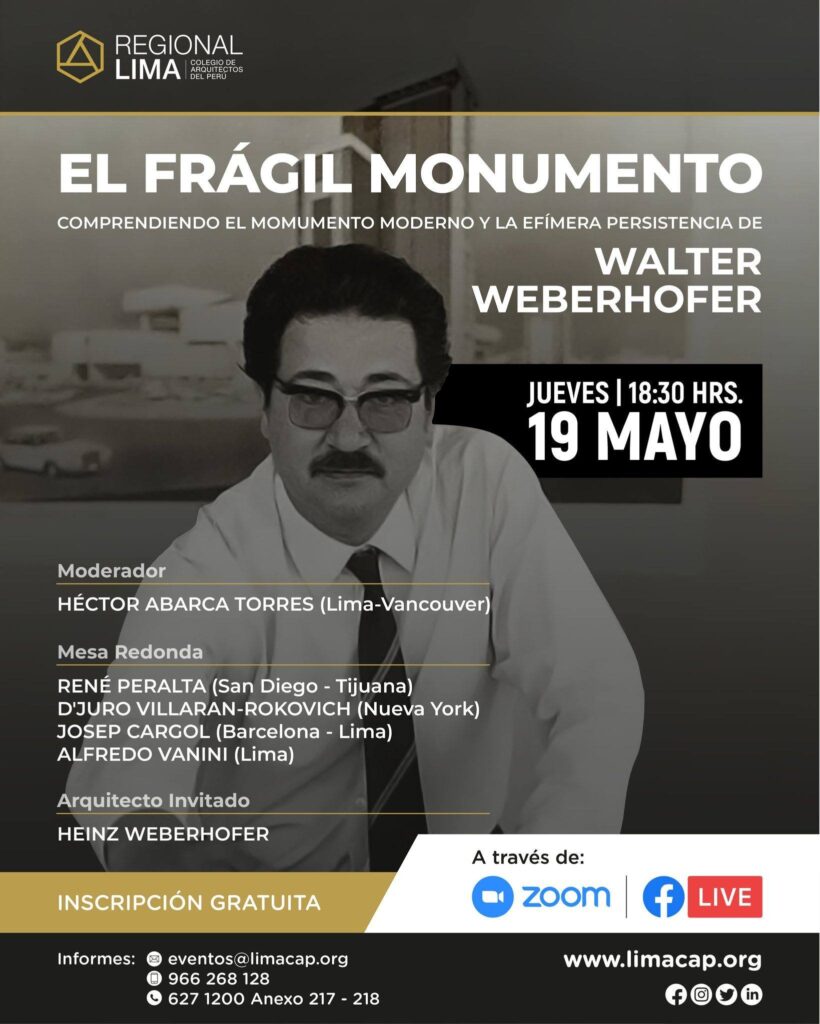
Monuments can be feats of engineering and architecture used to connect the present with the past and pass down a legacy. However, today, monuments are constantly threatened: they can become outdated symbols or no longer be in vogue with the public. How do we conserve significant buildings while they are still considered relevant? The work of one of Peru’s best modern architects Walter Weberhofer (1923-2002), could help us understand how to preserve buildings whose importance will not fade over time.
As part of the activities associated with the Institute of Architects of Peru, Lima chapter, Peruvian architect and historian Hector Abarca Torres invited five international architects on May 19, 2022, to discuss the work of Walter Weberhofer, one of Peru’s most important modernists. Abarca-Torres organized and moderated the online session, which included Walter Weberhofer’s son, Heinz Weberhofer.
The session began with a survey of Walter Weberhofer’s work, his time as a student, and a discussion of his most significant achievements. As one of Peru’s most sought-after architects, Weberhofer designed and built public and private buildings and several acclaimed residences. Some of his most celebrated buildings include the Atlas tower (1955-55), whose design was inspired by Brazilian modernism, and the Casa Fernanidini (1958-59), a house perched on a cliff with cantilever balconies similar to Frank Lloyd Wright’s falling water.

In the context of Weberhofer work, Abarca-Torres frames a series of questions regarding the ownership of architectural patrimony. These interrogations begin the discussion between the paIn the context of Weberhofer’s work, Abarca-Torres frames a series of questions regarding the ownership of architectural patrimony. These interrogations begin the discussion between the panel; the arguments focus on several topics that include the participation of government, academia, and civil society in the responsibility of conserving modern era architectural patrimony.

Heinz Weberhofer ended the evening by stating that he had to sell the house built by his father, where he currently lives, for personal reasons. The unknown fate that might befall the structure upon its transfer was somewhat concerning.
The full recording of the session (in Spanish) can be found in the link below.

